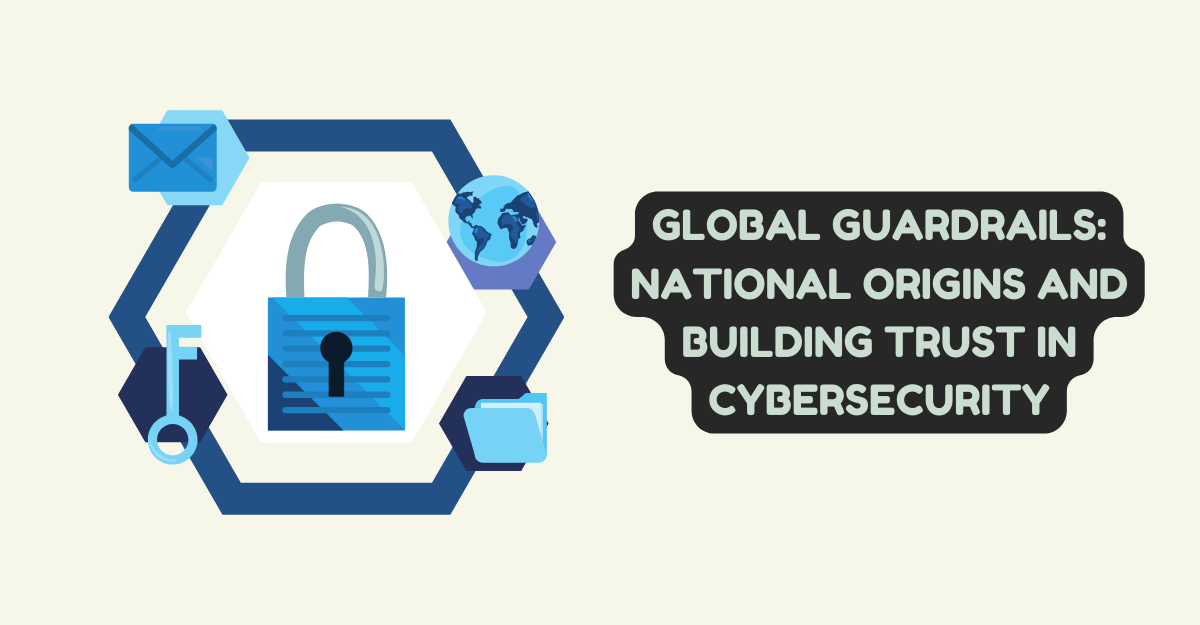
- Understanding the influence of a tech company’s national origin on public trust and cybersecurity.
- Deciphering myths and focusing on objective measures to evaluate technology efficacy.
- Recognizing the role of transparent operations and regulations in fostering global cybersecurity trust.
Introduction to Cybersecurity and National Trust
In today’s hyper-connected world, cybersecurity forms the backbone of safe digital interaction. This sphere of safety and trust in technological solutions is a significant concern for individuals, businesses, and governments alike. A single breach can lead to irreparable financial and reputational damage. It’s not surprising, then, that the topic of trust is often rooted in the origins of a technology provider. For instance, seeking clarity about the origins of Fortinet encapsulates broader inquiries about security standards and existing geopolitical tensions that may influence trust in technology.
Deciphering the Myths About National Origins and Tech Companies
Our perceptions of technology companies are often influenced by their national origins, a reality that can foster numerous myths regarding their trustworthiness and reliability. However, these assumptions may cloud our capacity to make informed decisions. Specifically, the conflation of geography with security prowess or ethical practices can create biases that divert attention from the technical merit and cybersecurity track record of companies. Is Fortinet a Chinese company? As we navigate through an increasingly complex digital world, it is essential to separate fact from fiction and base our technology choices on substantive evidence rather than preconceived notions.
The Geopolitics of Cybersecurity: A Global Concern
Cybersecurity does not exist in a vacuum. It intersects with international relations, with the geopolitical ties of a tech company’s home nation playing a crucial role in public and corporate trust. The alliances and conflicts that countries engage in can extend to the cybersecurity domain, where power, influence, and trust can be asserted or challenged through technology. The scrutiny of tech companies often goes beyond their products, encompassing their government’s policies and international postures toward cybersecurity.
Cybersecurity Standards Across Borders
As cyber threats know no boundaries, international cybersecurity standards are paramount to establishing consistent measures of protection worldwide. These standards create a level playing field for all actors, regardless of location. Best practices, protocols, and compliance frameworks, such as ISO/IEC standards, aim to create homogenous security landscapes where the origin of a technology provider is a lesser concern than their adherence to Global cybersecurity standards. Despite these intentions, the implementation and enforcement of such standards can vary widely from region to region, adding complexity to the assessment of technology companies across different geographies.
Evaluating Cybersecurity Track Records Globally
Looking at the actual cybersecurity track records of various global technology companies can provide a more comprehensive understanding of how they fare, apart from their national origins. Detailed case studies reveal the protocols implemented, responses to breaches, and innovations in protecting data and systems. For instance, evaluating the cybersecurity measures taken by companies in response to high-profile threats allows us an objective benchmark against which to gauge their competency. In these case studies, successful defense strategies shine, serving as yardsticks for security efficacy regardless of where a tech company calls home.
How to Evaluate a Tech Company Beyond Its National Origin
If we step beyond geographic stereotypes, the criteria for assessing a tech company’s cybersecurity credibility become more transparent and pragmatic. Factors such as a track record in data protection, quality and frequency of security updates, responsiveness to incidents, and willingness to engage with industry-wide security initiatives carry more weight than a simple geographical association. This objective lens opens a pathway to establishing trust based on verifiable qualifications, as opposed to inherent biases that may be linked to a company’s national origin.
The Importance of Transparency and Regulation in Cybersecurity
Build lasting trust in technology; both transparency and effective regulation are essential. Companies that openly communicate their security policies, incident responses, and compliance with international standards are more likely to gain the confidence of users and partners. Regulations can, too, have a significant impact. When they are well-crafted, evident in their requirements, and enforced without prejudice, they strengthen the security posture of technology providers across the board. Conversely, regulations needing these qualities can dilute trust and hinder efforts to achieve a consistent cybersecurity landscape.
Collaborative Efforts in International Cybersecurity Initiatives
Cyberspace faces myriad threats that demand a collaborative response. Joint initiatives provide platforms for sharing resources, insights, and intelligence—crucial elements for an effective defense against cyber threats. International agreements, research partnerships, and shared technology standards demonstrate that many cybersecurity challenges can be effectively addressed through unity rather than isolation. A more resilient and trusted digital ecosystem emerges as countries and companies learn from each other’s strengths and compensate for weaknesses.
Future Trends in Global Cybersecurity and Technology Trust
The cybersecurity landscape continuously evolves, with new trends and predictions constantly reshaping how we approach trust in technology providers. Vigilance in understanding and adapting to these changes is paramount for all stakeholders. Staying informed and proactive will enable us to make informed decisions that contribute to building a secure digital world, irrespective of national borders.
Conclusion: Building a Safer Cyber Future Together
The emphasis on understanding the role of national origins in trust and technology efficacy is to consider where a company originates and broaden our perspective on cybersecurity. We must look towards a balanced view with a multifaceted approach to evaluating tech providers. By fostering collaboration, enacting sound regulatory policies, and maintaining transparency, we can move towards a more secure, unified digital future. Through this collective effort, trust in technology can be grounded in verifiable attributes, not just the company’s geographic or national identity.